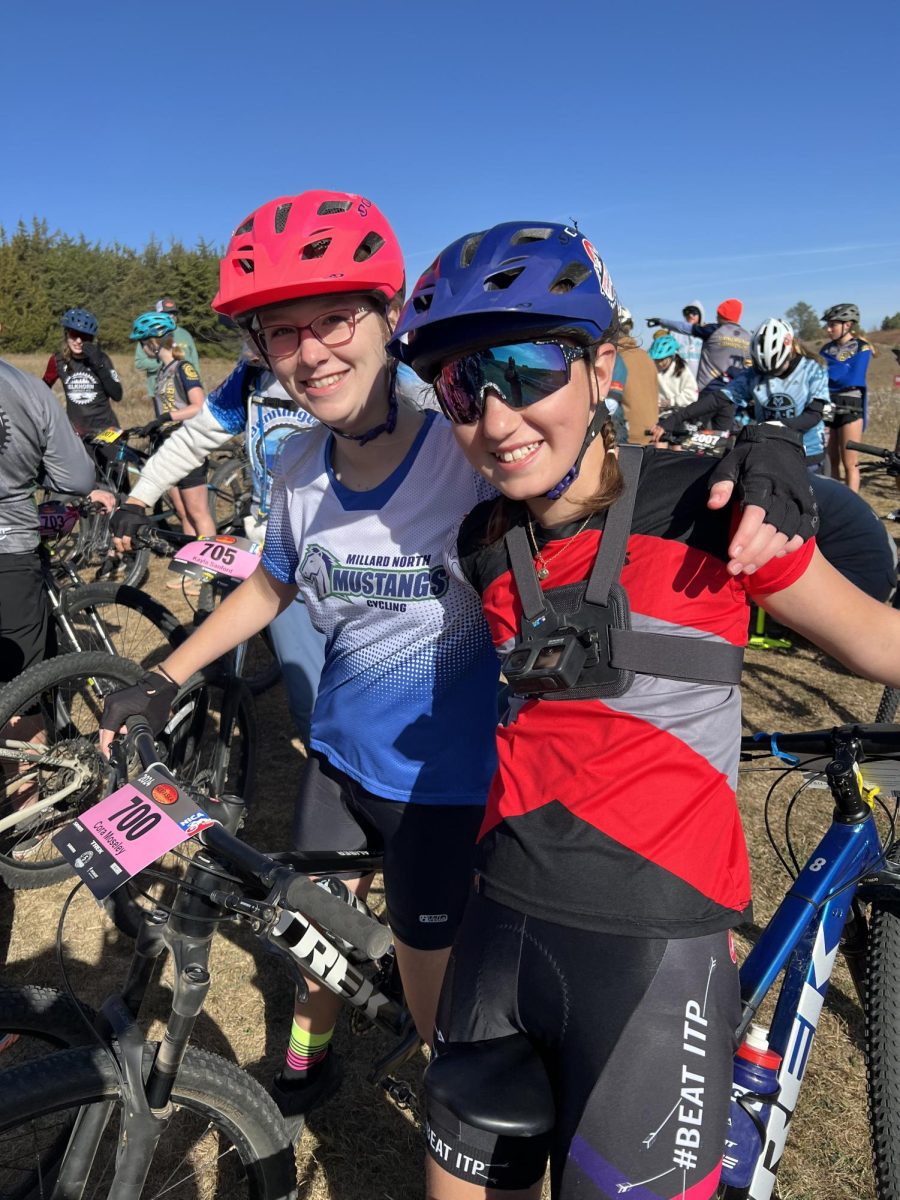Wheels spin faster as the hill steepens downwards. The hard work and pain of pedaling uphill is finally rewarded as the bike seems to fly off the ground, twigs and leaves snapping underneath the weight of the wheels.
Cycling is one of the most common forms of exercise in the United States. The League of American Bicyclists estimates that altogether American youth spend approximately 13,000,000 minutes biking each year. According to the Pew Research Center, over half of the United States population owns and rides bikes regularly.
Four years ago, senior Charlie Votrabek started MN’s own cycling club with the help of their sponsor, science teacher Jeff Machal. Although the cycling club is one of MN’s smallest clubs, they are still incredibly active both in and outside of school.
“[During our meetings,] we talk a lot about bikes. We set up rides to ride our bikes around and talk about bike maintenance as well… [we] go to Tranquility Park and ride those mountain bike trails,” Votrabek said.
The team has monthly meetings at the school to discuss future races and events and other cycling-related topics. They also meet with similar clubs from the rest of the Millard schools at Tranquility Park during two-hour practices once or twice a week.
“It’s a great way for any student, male or female, from grades 6-12… [to] get involved with cycling. You don’t even have to have a bicycle. You can still get involved, start learning about bikes, riding skills, and then if you want to be competitive there’s various events and races,” Machal said.
No matter the bikers’ level of experience, the cycling club welcomes all. The club helps every participant improve and progress, whether they have years of experience or none at all.
Although he had little prior experience, Votrabek started the club and now bikes regularly in races. In contrast, freshman Cora Moseley has been biking for many years. She is a legacy bicyclist, as her dad helped start the Nebraska Interscholastic Cycling Association (NICA) fifteen years ago. NICA is the organization that runs the races in which the cycling club participates.
“My dad invited me to come to this practice one time, and I did… I started biking in like seventh grade, and I’ve been on the [NICA] team ever since,” Moseley said.
Whether participants have had minimal or many years of experience, they can find an outstanding team to improve their skills with.
The Cycling Club also provides its athletes with one-of-a-kind opportunities to race against similar clubs from around the state. They travel around Nebraska and even to surrounding states for these races.
The races take place roughly every two weeks, and the length of the races depends on the team each cyclist is on, with middle school, freshmen, junior varsity, and varsity riding increasing numbers of laps.
Each cyclist can choose whether to focus on overall placement between teams or beating their personal records.
“It’s a great way to basically race against yourself [and] race against the clock… You can be as competitive or noncompetitive as you’d like to be,” Machal said.
The focus on improvement and beating personal times helps to keep athletes motivated and positive throughout the season, as well as building a group focused on mutual self-improvement.
“It’s less about other people pushing you, it’s more about pushing yourself. You don’t have to race if you don’t want to,” Moseley said.
Since the community is so small and tight-knit, almost everyone knows each other. Opposing competitors often remember each other, since participants regularly race against the same people.
“[In] the biking community, there’s so few of us that all of us know each other, especially the girls. There’s maybe 30 or 40 of us [girls] total so we all cheer each other on,” Moseley said.
Even when competing for opposing teams, the mountain biking community is incredibly supportive and they work hard to build each other up in every part of the races.
Close friendships are often formed even between competitors from different schools, such as Moseley and one of her closest competitors, Westside athlete Emma Stromp.
“We’re really close time-wise, but before we start, we’ll give each other fist bumps and high fives and get a picture together, and then we’ll race. We’ll be encouraging each other on the trail, even though we’re competing for the medal,” Moseley said.
This level of support between opposing teams is incredibly rare in the athletic world. These bonds between competitors help create wonderful, healthy, and vibrant friendships between teams.
“I’ve always said this but… mountain bikers are some of the best people that you’ll ever meet because we’re such a close community. [We] all really support each other,” Moseley said.


